VII. Campus Plans, 1891 - 1915
"A general campus building scheme adopted in June by the faculty and the board of regents provides for the development of the university campus along rationally beautiful and artistic lines."
--The Washington Alumnus, August 1915
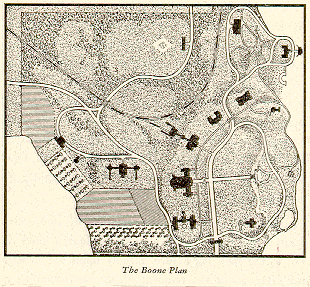
Campus Plans: The Boone and "Oval" Plans
In 1891 the University Land and Building Commission hired William Boone as the campus architect. He developed the Boone plan, which grouped the academic buildings on the southern part of the campus site facing Union Bay. This plan was never implemented since it was considered extravagant. When the first building, Denny Hall, was sited, it was done so without consideration of a campus plan or the future growth of the University. During the construction of the two dormitory buildings in 1900, A. H. Fuller, an Engineering professor was asked to develop a campus plan. His plan is known as the oval plan, as the buildings were to be grouped in an oval around a large central space. Science Hall (Parrington) was located in accordance with this plan.
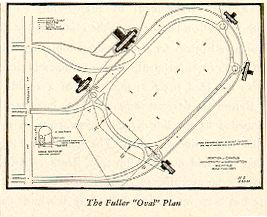
Campus Plans: The Olmsteds and the A Y P
In August 1903 the Regents asked the Olmsted Brothers of Brookline, Massachusetts, to develop a campus plan. The Olmsteds had just completed a Seattle parks plan. Their 1904 plan converted the oval to an arts quadrangle and added a science quadrangle to the south.

In 1906 the Alaska-Yukon-Pacific Exposition Board of Trustees hired the Olmsteds to develop a plan for the AYP Exposition, which was to be held on the University campus. The A Y P plan was developed under the direction of John C. Olmsted. The fairgrounds occupied the southern two thirds of the campus site with the existing campus on the northern third. It was laid out without reference to the campus oval plan. A major axis and vista towards Mount Rainier was developed which remains one of the major features of today's campus.
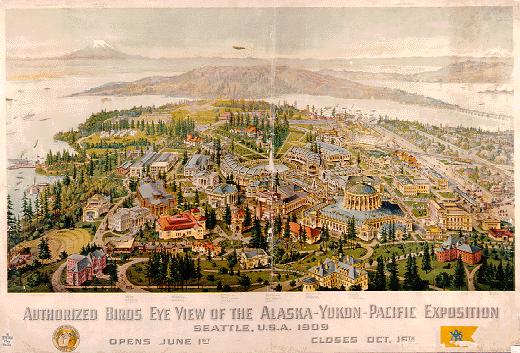
Birdseye view of the Alaska-Yukon-Alaska Exposition, 1909 (UW 1378)
When the Exposition ended in October 1909 the University received 25 buildings plus the streets and other improvements that had been made for the Exposition. These included the Geyser Basin, now Drumheller Fountain. The 25 buildings included three that were intended to be permanent additions to the campus plus others that were adapted as academic buildings; the Washington Building, e.g., became the Library. Fifteen buildings were used for various auxiliary purposes, such as the New York Building, which became the president's residence, and the Hoo Hoo House, which became the Faculty Club. Since most of the buildings were not intended to be permanent they began to deteriorate rapidly.
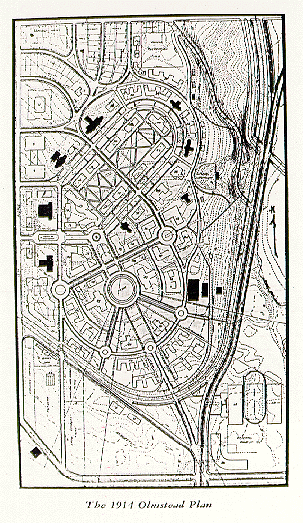
Campus Plans: the 1914 Olmsted and 1915 Gould Plans
In 1911 on the recommendation of President Kane, the Regents hired the Olmsteds again to develop a new campus plan that integrated the existing campus with the AYP grounds. The 1914 Olmsted plan was reviewed by a joint committee of regents and faculty, whose recommendations included accepting collegiate Gothic as the architectural style for the campus, establishing the library as the central architectural feature, and hiring an architect to revise the 1914 plan. The firm of Bebb and Gould, with Carl F. Gould as the project principal, was hired. (Gould was also hired as a lecturer in architecture beginning in the fall 1914. He was appointed Head of the Department of Architecture in 1915, a position he held until 1926). The 1915 Gould plan became the model for the next period of campus development.
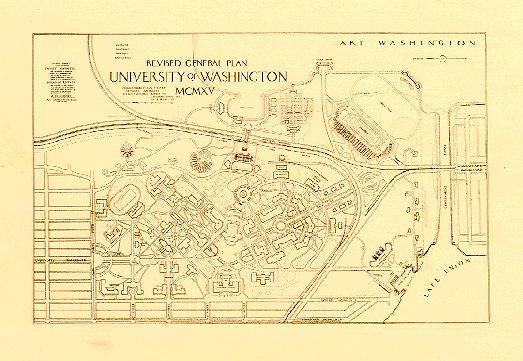
The 1915 Gould Plan (UW 6049)